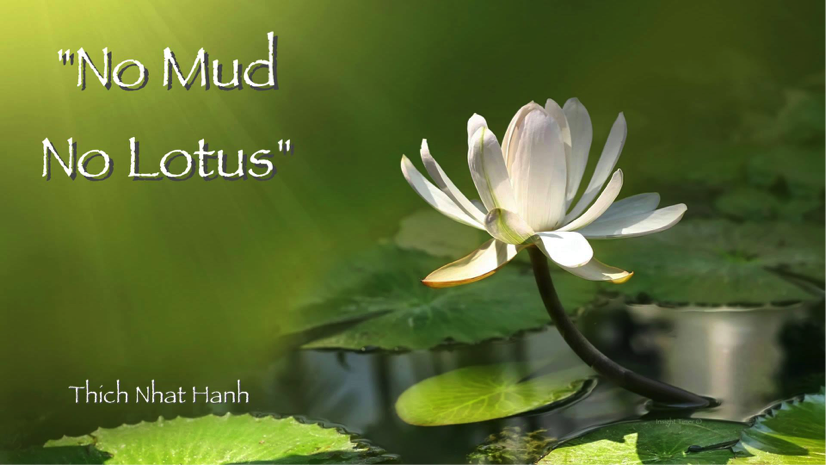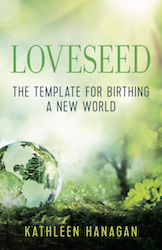“There is a hard truth to be told: before spring becomes beautiful, it is plug ugly, nothing but mud and muck. I have walked in the early spring through fields that will suck your boots off, a world so wet and woeful it makes you yearn for the return of ice. But in that muddy mess, the conditions for rebirth are being created.” Palker Palmer
I once heard a piece of wisdom that says the difference between a weed and a flower is a judgment. When it comes to our suffering, whether it be physical, mental, emotional, spiritual, financial —whatever version of human suffering arises in you or someone you love—applying the capacity for reframe—for seeing with new eyes—-can mean the difference between breaking down and breaking through.
We all yearn to live in the light, and yet we all have personal and collective darkness that manifests as suffering. A door opens when we embody the knowing that we are fully responsible for our own darkness.
This is not to be confused with the erroneous New Age view that you brought your illness or bad luck on yourself. We often do not “cause” our suffering, and even if we have, through some addiction or unhealthy behavior, it is seldom a conscious choice, and always some adaptation to cope with inner pain. So let’s relinquish the idea of cause and blame altogether, and understand what I mean by being “responsible” for your own darkness.
In our western culture, suffering is considered part of the darkness. Suffering visits all of us, and when it does, it is natural to want to make it go away. To be responsible for our darkness means that we see suffering as an opportunity to become more conscious, more of who we truly are.
Taking responsibility begins with compassion, using it as a guide all along the way through darkness, into the light….a thread that connects us to hope—-the kind of hope that David Steindl-Rast refers to when he says “The hope that is left after all your hopes are gone—that is pure hope, rooted in the heart.”
Rather than running from our darkness—our depression, anger, anxiety, lack of joy— we can choose to see the symptoms as an invitation from our soul to take a path of descent into unexplored aspects of the self. It is a call to integrate all parts of you. No matter where you are and no matter what suffering you are still experiencing, you can see your symptoms as feedback—a kind of GPS of the soul— the natural pangs of birthing a new consciousness. I call this conscious suffering.
This descent is out of synch with our masculine forward-driving culture that wants to take a pill so that we can continue to race toward some imaginary finish line. It is considered more of a feminine path, a reaching down into the fertile soil of who we are, before rising toward the light.
As Eckhart Tolle puts in in The New Earth, “eventually suffering destroys the ego—but not until you suffer consciously. . . . In the midst of conscious suffering, there is already a transmutation. The fire of suffering becomes the light of consciousness.”
Like the magnificent lotus that rises up out of the mud, our personalities are often polished in the process of conscious suffering, leading us to be more humble, kinder, more empathic, wiser.

We suffer when our local egos war on the path of integration with our higher self, and that is different from the conscious suffering required to pivot and truly transform. In the first case, we suffer because we feel the separation between our ideal self-image and where we presently are, and in the case of conscious suffering, we feel the authentic pain of not being all we can be, of being separated from our essence.
During a “dark night of the soul” – which comes from the poem of the same name by Catholic mystic St. John of the Cross, the foreground of a person’s existence seems to fall away, and he/she faces a kind of existential crisis. This crisis may be the dilemma of loving two people while married, of wanting to abandon a responsibility that would mean a total loss of identity, or being caught doing something illegal. There is always the opportunity for great growth during these times, as we let go of the outer images of what we thought we were, to find out who we truly are.
Conscious suffering allows you to lead an epic life, where you are continuously offering your own suffering in service of others. There is a beautiful and ancient Tibetan Buddhist meditation that spiritual teacher Pema Chodron teaches, called Tonglen, which means “giving and taking.” In this meditation, you deeply connect with your own personal pain and breathe consciously through the heart, and then do the same as you connect to all beings who suffer that same feeling of loss or betrayal or fear. You can find a copy of this beautiful meditation here.
Our imperfections, our suffering, bring us to our knees. If we are too perfect and cannot fail, we never surrender and cannot ever discover the true meaning of our larger purpose, and realize the powerful quality of amor fati, a Latin phrase meaning “love of one’s fate.” It is used to describe an attitude in which everything in one’s life, including suffering and loss, are necessary, simply because they are. Amor fati means that you deeply accept the events and situations that have brought you where you are, which brings a deep and abiding peace.



This was beautiful!! I always enjoy reading, I wish I could still come see you! Thank you for being YOU. ❤️